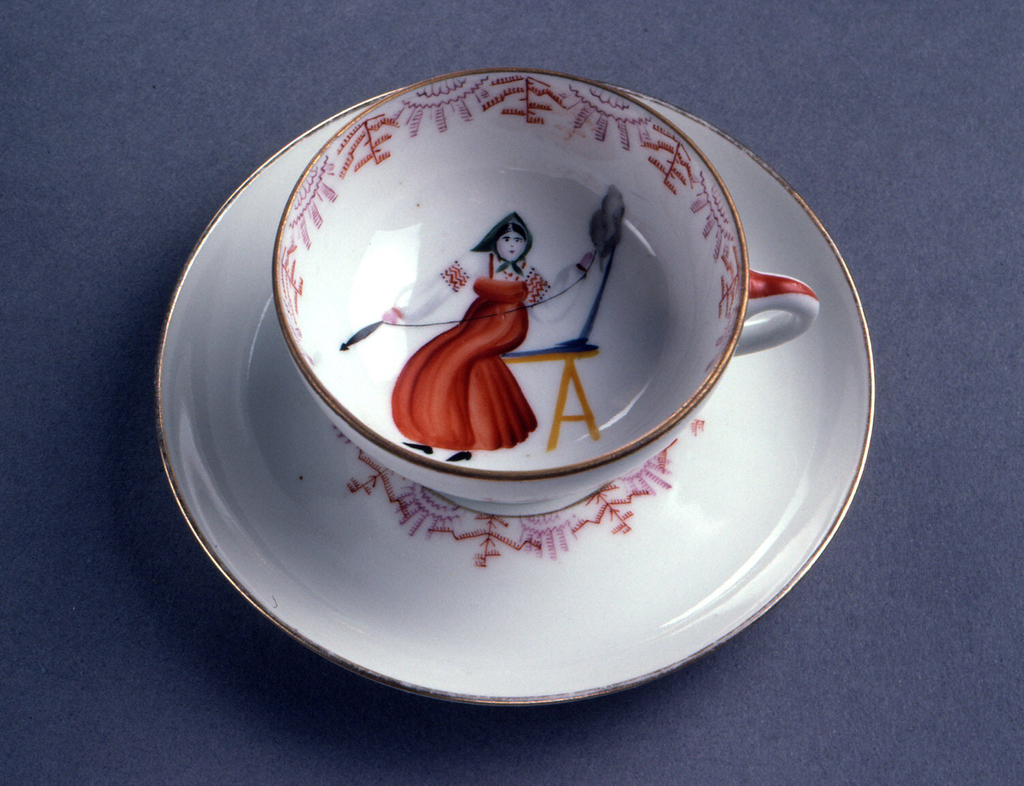In 1918, amidst raging civil war and biting famine, Russia’s fledgling communist government was determined to communicate its values to a massive, largely illiterate and rural public. It found one of many vehicles in an equally massive propaganda campaign.
The government mobilized artists from across Russia to create images in a vast array of media. These pervasive artworks touted the hammer and sickle alongside arguments for education and proper hygiene. When economic hardship swiftly brought about shortages of materials like paper, however, improvisation was necessary. And in that instant, there was no better place for artistic improvisation than the Imperial Porcelain Factory.
The factory’s storerooms were filled with porcelain blanks, awaiting decoration for special orders from the defunct czarist regime. Bolshevik artists adorned the blanks with radiant images of workers and government leaders, painting over the names of past czars stamped on the underside of each plate with hammer, sickle and wheel.
This particular example (1989-41-78-a,b) bears the same mark, despite having been painted over 10 years after the first Russian propaganda porcelains (after the Imperial Porcelain Factory was renamed Lomonosov Porcelain Factory in 1925). The teacup and saucer are also comparatively plain beside the fervent pathos of their predecessors. At the center of the teacup, a peasant woman gazes placidly at the viewer as she spins wool into thread. Her job is humble, but necessary, and therefore, it is empowering.
This cup and saucer seem to be associated with the conservative Stalinist porcelain group AKhRR (Association of Artists of Revolutionary Russia). AKhRR sought to portray “heroic realism,” championing everyday workers and industries that contributed to the advancement of society.
While certainly embodying this early form of socialist realism, the cup and saucer also exemplify a contradiction inherent in propaganda porcelain. The images themselves are designed to tug at the patriotic heartstrings of the Russian everyman as he uses them in his daily routine, in his home. They were designed not just to educate, but also to elevate culture from the inside.
A Russian was more likely to ogle at these rare porcelains in a shop window than to own one, however. Instead, they were showcased at international fairs, gifted by diplomats and stored in the brimming cabinets of government officials. Even as they venerated the humblest worker, Russian propaganda porcelains were icons of wealth.
Chelsea Butkowski is a Summer 2014 Peter Krueger intern in the Cooper Hewitt’s Product Design and Decorative Arts Department. She studies art history and communication at SUNY Geneseo.
